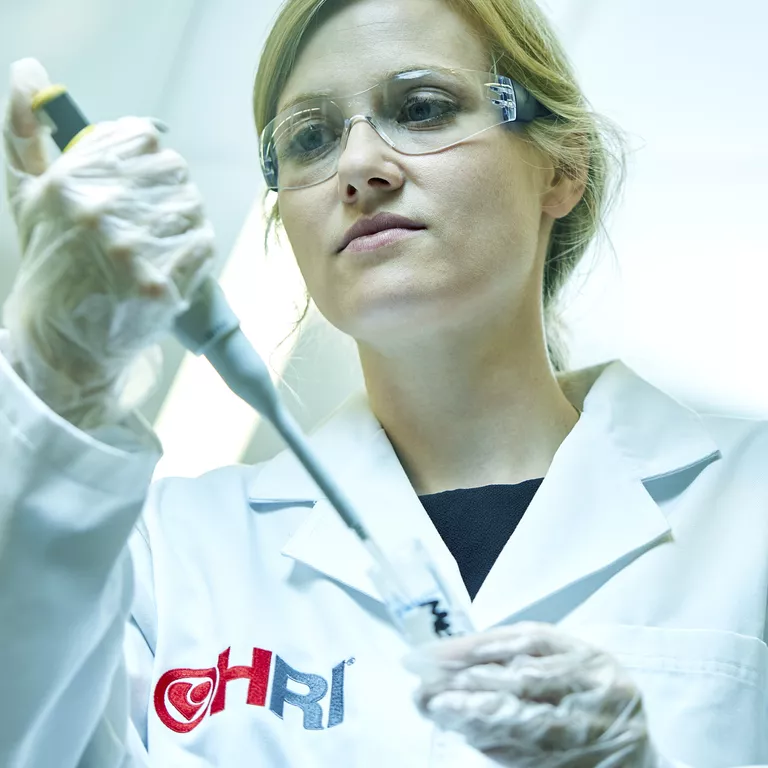Dr Anna Waterhouse is investigating how vital medical devices, such as those used in heart surgery, can be made safer for patients.
Medical devices carry the risk of thrombosis – the formation of blood clots – which can cause severe side effects in patients and require treatment that carries its own increased risks.
“The effect of the properties of materials used in medical devices on thrombosis is still poorly understood,” says Dr Waterhouse, leader of the Cardiovascular Medical Devices Group at HRI.
In this research, the Group investigated the effect of material wettability – the ability to repel liquids like blood – on thrombosis, by examining the structure of blood clots on polystyrene, a material used to make medical devices such as blood filtration filters and stent coatings. The results were recently published in Advanced Healthcare Materials.
The Group used plasma from blood donations to study how the blood plasma formed fibrin clots on polystyrene, using a combination of techniques including microscopy to visualise the structure of fibrin fibrils in the clots. They found that blood clots on unmodified, non-wettable polystyrene have a less dense structure, compared to blood clots on modified, wettable polystyrene. They also showed that these less dense fibrin clots could be broken down more easily using a clot-busting drug.
“This new information could lead to more targeted approaches to break down blood clots on medical devices,” says Alexander Ruhoff, lead author of the paper.
In the next stage of this research, the Group will further investigate the stability and mechanical properties of blood clots on polystyrene and other materials under different conditions. They will also further examine the ability of clot-busting drugs to break up these types of blood clots, in a step towards targeted treatment for patients suffering from blood clots on their medical devices.

